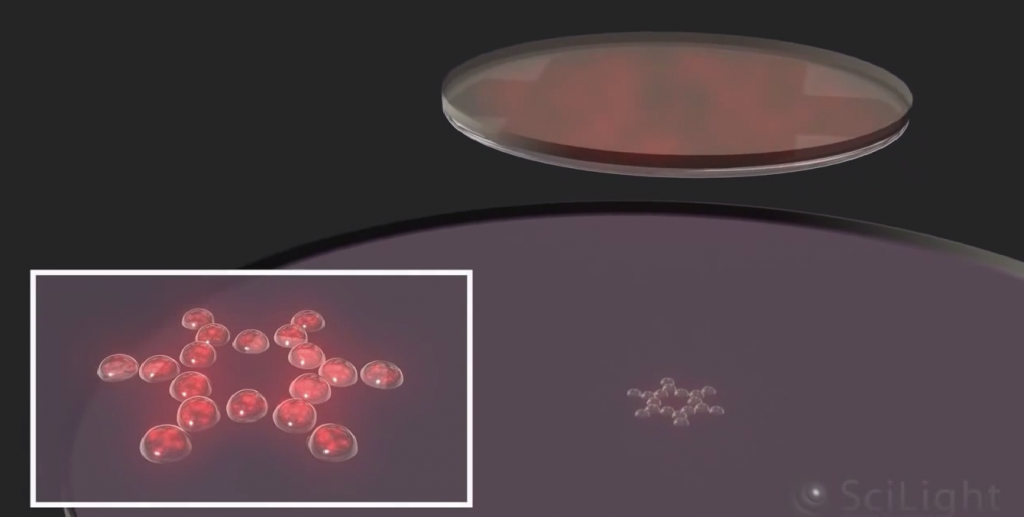Chemical Giant BASF Teams With Poietis on 4D Bioprinted Skin Project
 While Organovo has been making headlines by 3D printing human liver, kidney and skin tissue, they are not the only one’s around who are developing bioprinting technologies. The little known French startup, Poietis, who launched in September of 2014, is also working feverishly on the development of laser technology which can bioprint living human cells.
While Organovo has been making headlines by 3D printing human liver, kidney and skin tissue, they are not the only one’s around who are developing bioprinting technologies. The little known French startup, Poietis, who launched in September of 2014, is also working feverishly on the development of laser technology which can bioprint living human cells.
Poietis’ approach strays wildly from other companies like Organovo in that instead of using the typical extrusion model of printing that we are all used to seeing, they are working on laser-assisted bioprinting. This approach allows for incredibly accurate, high resolution printing of living cells. In fact, they claim to be able to concentrate as many as 100 million cells per millimeter and print them at 20 micron resolutions. This results in a phenomenal 100% cell viability rate.
The way the technology works is that a laser is focused on a substrate containing the cells. This creates a jet of micro droplets which are focused then onto the build plate as the machine delicately ‘prints’ these cells layer by layer, in three dimensions. They call this process ‘4D Bioprinting’ because a forth dimension is utilized, and that dimension is ‘time’. Once the tissue is printed, time is required for the cells to communicate and self-assemble.
This unique approach to bioprinting has attracted the attention of the largest chemical producers in the world, BASF. Headquartered in Ludwigshafen, Germany, BASF has been a force within the chemical industry for over 150 years, and recently turned in another direction, towards the fabrication of human skin tissue, using a chemical derived from dill that they call Lys’lastine V. Now BASF wants to use Poietis’ laser technology, combined with their own chemicals and processes to better fabricate their Mimeskin™ tissue.
“We are extremely pleased about this collaboration. Having long-term expertise in solutions for the dermo-cosmetics market, BASF understands the benefits of 3D laser-assisted bioprinting compared with conventional cell culture technologies and other bioprinting methods,” explained Dr Fabien Guillemot, Founder and President of Poietis. “The partnership also emphasizes bioprinted tissue models as an alternative to animal testing in cosmetics and dermopharmacy.”
The two companies have just signed a cosmetics R&D agreement to work together on this new project.
“Compared with other bioprinting methods the laser-assisted technology provides higher resolution when it comes to the patterning of cells,” explained Dr Sebastien Cadau, responsible for tissue engineering development at BASF. “The partnership with Poietis allows BASF to secure its strategic advantage in better understanding the skin mechanisms which support the development and testing of advanced cosmetic bioactives for skin care applications.”
As the bioprinting industry continues to gain steam, it will be interesting to follow these two companies as their work together begins paying dividends. There’s little doubt that numerous companies, both large (like BASF) and small (like Poietis) will enter this space over the coming years. Details of this recent agreement have yet to be divulged by either company and likely will stay that way for a while.
Let us know your thoughts on this interesting partnership in the BASF 3D Bioprinting forum thread on 3DPB.com. Be sure to check out the video below showing how Poietis’ laser technology works:
Subscribe to Our Email Newsletter
Stay up-to-date on all the latest news from the 3D printing industry and receive information and offers from third party vendors.
You May Also Like
Poll of the Week: Best Dental 3D Printing Applications
We asked our LinkedIn followers, in our very first Poll of the Week, what kinds of stories they wanted to read more of on 3DPrint.com, and the final answer was...
Revo Foods to Rev up Mass Production of 3D Printed Alt-Salmon
One of the major challenges facing 3D printed food is its scalability in comparison to traditional food production. The 3D printing industry generally specializes in creating small items. It can...
Carbon Adds Three New 3D Printing Resins to Dental Materials Portfolio
Product development and manufacturing technology company Carbon has a very strong materials platform, including engineering-quality elastomers and photopolymers, for applications ranging from sportswear to medical and dental. This week, the...
Custom 3D Printed Eyewear, Now in Translucent Colors from Materialise
Way back in 2017, Fried Vancraen, CEO of Materialise, said he could foresee “a growing amount of meaningful applications” for 3D printing, which included customized eyewear. The Belgium-based 3D printing...


































